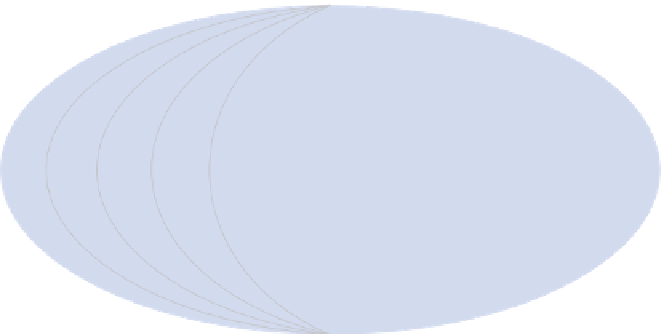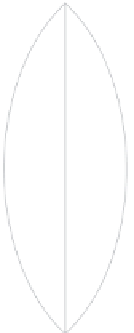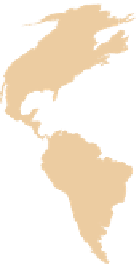Geoscience Reference
In-Depth Information
Continental Drift
To see how the plates have drifted over time, go to the
Geo Media
Library
and access
Continental Drift
. This animation shows the
position of continental landmasses during different intervals of
geologic time. Use the controls in the animation to play it, to step
forward or backward in time, or to rewind to the beginning of the
animation. You can also put the individual continental positions
into the context of the geologic timescale by accessing specific
time periods such as the Triassic or Cretaceous. After you com-
plete the animation, be sure to answer the questions at the end
to test your understanding of continental drift.
reversal. The ocean floor contains a record of
magnetic reversals because, as new seafloor
is progressively created, its magnetic orienta-
tion is aligned with the direction at that time.
Overall, the isochrones and magnetic strips in-
dicate that the rate of crust movement appears
to range from 1.0 cm to 15.0 cm (0.4 in. to
5.9 in.) annually.
Given the overwhelming evidence for con-
tinental drift, it is possible to reconstruct the
patterns of movement through time. Geologists
generally agree that the continents began to co-
alesce to form Pangaea as early as 300 million
years ago, during the Pennsylvanian Period. If
you recall from Chapter 12, this is the period
of time when Earth was much warmer and mas-
sive amounts of carbon began to accumulate
in steamy swamps. Figure 13.5a shows how
Pangaea probably looked around 275 million
years ago. Notice that South America and Af-
rica were indeed joined at this time, as were the
eastern coast of North America and Africa. By
about 200 million years ago, most of the con-
tinents had begun to slowly drift apart to reach
their present positions. An important exception
is the Indian landmass, which moved relative-
ly quickly (as far as deep time is concerned)
across what is now the Indian Ocean to collide
Pangaea
0°
(a) 275 million years ago
India slams into southeast
Asia, raising the Himalayas
North
America
Eurasia
Africa
0°
South
America
India
Australia
Australia breaks
off from Antarctica
Antarctica
(b) 60 million years ago
Land bridge breaks between
Asia and North
America
Africa slams into
Europe, raising
the Alps
Alps
Figure 13.5 Continental drift in the past
275 million years.
(a) Geography of the Pangaea
supercontinent during the Permian Period about
275 million years ago. At this time, all the conti-
nents were connected to form one giant landmass.
(b) Geography of continents at the beginning of
the Cenozoic Era about 60 million years ago. Note
the relative directions of continental movement.
(c) Configuration of continents today. The continents
continue to move around the surface of Earth and
will eventually change the world's appearance again.
Himalayas
0°
Land bridge
forms between Americas























































































































































































































































































































































































